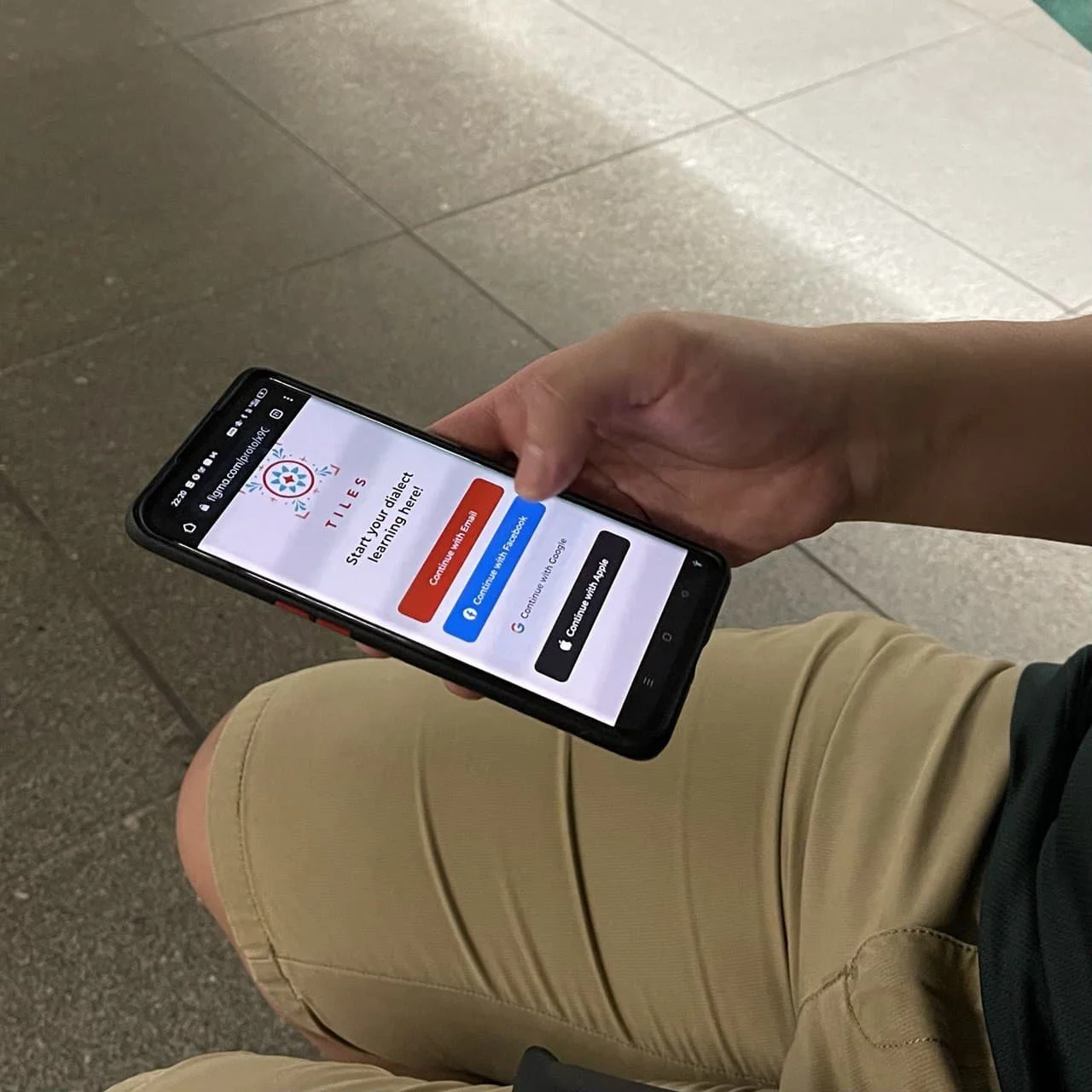Tiles
Focus Areas
UX Research
Ideation
Prototyping (work-in-progress)
Project Type
Personal Project
Duration
Work in Progress (Nov 2021 - present)
The background
One factor towards the modernisation of Singapore was policies aimed at creating cohesion and economic benefits. However, as more Chinese Singaporeans are nurtured in a Mandarin and English environment, unintended effects of not speaking their own mother tongue ensued — including inter-generational language barriers and heritage loss. Hence I wanted to:
Create a platform where younger Chinese Singaporeans can effectively learn other Chinese varieties.
Understanding the probleM
Learning Cantonese myself
(left to right) Learning vocabulary from Drops, content from iTalki lessons, and words from an online dictionary
Prior to this project, I attempted to learn a dialect as a means of research, to limited success. Through this process, I found myself engaging with language-learning apps, an online tutor and dictionaries.
From here, I deduced several features for effective dialect acquisition, comprising of:
Resources to build and maintain vocabulary (e.g. flashcards, romanisation systems)
Immersion into content in the target language (e.g. movies, written content*)
Opportunities to converse with other speakers
Precedent studies / ‘competitive analysis’
With these features in mind, I analysed several language-learning apps and the features they offer. Other than the fact that almost none of these apps feature Chinese varieties, none of them offered the aforementioned 3 features. This became my opportunity for the solution.
User Interviews
Interviewees cited a lack of need, practice and/or community as common failures when learning.
I also conducted interviews with 12 individuals, half of which have attempted learning languages (including Chinese dialects) while others have not. I asked them the questions below to determine their learning pedagogy and their reasons for their success, failure and/or disinterest, and then organised by data through affinity mapping.
INTERVIEW HIGHLIGHTS:
Whether interviews have attempted dialect learning before.
If yes, their motivation, methods and difficulties.
If no, an instance where they need to learn a dialect.
Describe an instance where they accomplished a long-term and difficult task, and their motivation behind completing it.
The Main Insight
Learning involves repetitive review of vocabulary, and constant applications to the real world
Based on user research and observation, I noticed dialect learners tend to give up due to lacking access to dialect learning platforms (and vocabulary) as well as a lack of opportunities to proactively practice the language.
The User Journey
Personas
The Design
Ideating on features
With an idea of the users’ profile and needs, and with ideas for app features, I then ideated on these features, deducing their feasibility and layout possibilities.
Prototyping and testing
After exploration, the formulated ideas are then translated into the a high-fidelity prototype, with several improvements and adjustments based on feedback from user tests.
High-Fidelity Mockups
User testing and feedback
The Outcome
Product features (work in progress)
‘Tile-like’ interface
The app’s colour and graphics are meant to mimic the appearance of Peranakan tiles - an aspect of Chinese culture in this region - which enhances the learning experience through visual representation.
Learning through flashcards
New words and phrases are placed on a flashcard-like interface (tiles), and are reviewed by the user like how one would interact with flashcards, in order to learn new vocabulary in the most efficient manner.
Dictionary
The app also features a dictionary, where users can review learnt words and to learn new ones through inputting English words, Chinese characters, or romanisations.
More features in the works, including:
Events
Featuring a booking system for several language events (such as online practice sessions and language tables).
Loading Screens with tips
Encouragements and tips are given to users between learning sessions, encouraging them to speak the language they’ve learnt.
The Style Guide
Conclusion
Reflections on actions & processes
With a full-fledged individually-done UX project, I am immensely grateful to have been through the entire UX process - to undergo aspects from user research to information architecture to UI design. On this note, a few things I have learnt:
Be insight- not solution-driven. I embarked on this project with a lot of pre-understanding and pre-conceived ideas, which were challenged once ample user research was done, and are not reflective of the facts on the ground. For example, I discovered a general lack of interest in dialect-learning, which called into question the initial idea of creating a generic (but dialect-centric) language-learning app. However, other opportunities arise from taking in users’ practical needs, leading to an emphasis in this direction.
Iterate as much as I can. As this project is not yet finished, I started to realise the benefits of iterating, or creating many possible designs around a certain idea. This can result in unexpected and/or newer solutions, which can be combined or prioritised to solve issues. For example, I would wish to continue iterating on the dictionary’s design, in order to come up aesthetically-pleasing user interfaces and/or interfaces which are more user friendly.



















